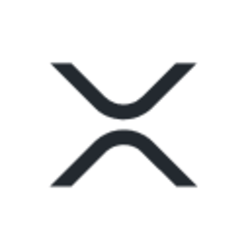Ripple custody forecasts 10% of global assets will be tokenized by 2030, driven by digital asset custody growth; Ripple projects crypto assets under custody could reach $16 trillion, supported by institutional partnerships and XRPL compliance upgrades.
-
10% of global assets tokenized by 2030
-
Digital asset custody and enterprise-grade key management are the primary drivers of institutional tokenization.
-
$16 trillion projected in crypto assets under custody by 2030, per Ripple’s market forecast.
Ripple custody forecasts 10% tokenization by 2030; learn implications and next steps for institutions — read on for strategic insights.
What is Ripple’s forecast for asset tokenization by 2030?
Ripple custody forecasts that by 2030 approximately 10% of global assets will be tokenized, driven primarily by the rise of regulated digital asset custody services. The company projects crypto assets under custody could reach $16 trillion as institutions adopt tokenized securities and stablecoins.
How will Ripple Custody enable institutional adoption?
Ripple Custody offers enterprise-grade key storage and integrations with regulated partners to reduce operational risk. Short implementation timelines and partnerships with financial firms such as Société Générale FORGE and BDACS improve trust. Combined with XRPL’s credential amendment, institutions gain clearer paths to meet KYC and AML obligations on-chain.
Ripple forecasts a 10% tokenization of global assets by 2030, driven by digital asset custody, with crypto assets projected at $16 trillion.
Ripple’s public forecast signals a structural shift: as tokenization scales, custody services become the backbone of market trust. Robust custody preserves private keys for tokenized real estate, securities, and stablecoins, while providing auditability and operational controls expected by institutional clients.
By 2030, 10% of global assets are expected to be tokenized. 📶
To seize this opportunity, institutions need a foundation of trust:
Discover how Ripple Custody delivers enterprise-grade security and the infrastructure for:
🔒 Safekeeping of private keys…
— Ripple (@Ripple) September 3, 2025
Ripple Custody is already in market use. Société Générale FORGE has issued a EURO-backed stablecoin, EURCV, on the XRP Ledger and uses Ripple’s custody infrastructure for safekeeping. In South Korea, BDACS is custodian for RLUSD, Ripple’s USD-linked stablecoin. These collaborations demonstrate custody’s role in bridging regulated finance and blockchain-native assets.
Why does the XRPL Credentials amendment matter for compliance?
The XRPL Credentials amendment introduces on-ledger credential creation, acceptance, and deletion. This feature helps institutions encode KYC/AML attestations and streamline regulatory reporting workflows. The result: fewer off-chain reconciliation steps and clearer audit trails for tokenized asset transfers.
Credentials are a technical enhancement, but they materially reduce friction for businesses seeking compliant settlement rails. By enabling verifiable on-chain attestations, the XRPL amendment strengthens institutional confidence and lowers barriers to cross-border token transfers.
Where is Ripple expanding tokenization efforts geographically?
Ripple’s expansion includes Europe, Asia, and Africa. The RLUSD rollout into Africa — enabled through partners such as Chipper Cash, VALR, and Yellow Card — aims to increase on-chain USD liquidity for regional fiat corridors. These regional partnerships show an approach focused on regulated issuer relationships and custody-enabled distribution.
Frequently Asked Questions
How significant is the $16 trillion projection for crypto assets under custody?
The $16 trillion projection signals large-scale institutional uptake of tokenized assets and stablecoins. It reflects broader asset tokenization trends across securities, commodities, and real estate, and assumes strong growth in regulated custody services and on-chain compliance frameworks.
What should financial institutions do now to prepare for tokenization?
Institutions should assess custody models, adopt compliant custody solutions, test XRPL credential integrations, and partner with regulated stablecoin issuers. A phased approach—pilot custody for stablecoins, then expand to tokenized securities—reduces operational risk.
Key Takeaways
- Forecast: Ripple predicts 10% of global assets will be tokenized by 2030, with crypto custody assets reaching $16T.
- Custody is central: Enterprise-grade custody and partnerships (e.g., Société Générale FORGE, BDACS) are driving institutional adoption.
- Compliance tools: XRPL’s Credentials amendment delivers on-chain mechanisms for KYC/AML, improving auditability and regulator confidence.
Conclusion
Ripple’s forecast underscores custody as the foundational layer for large-scale tokenization. Institutional partnerships, XRPL credentialing, and regional rollouts like RLUSD in Africa create an infrastructure pathway for tokenized assets. Market participants should prioritize custody integrations and compliance readiness to capture tokenization’s next wave.
